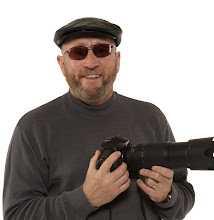Taking Pictures of Flowers is Probably not the best winter topic, but I am getting ready to do a class for a gardening group on how to take pictures of their flowers. So I thought in preparation I would write an entry about the subject. There are several aspects to taking pictures of flowers. The first is focus. Each camera is a little different, however you will want to use the one or two point or center balanced focus setting on your camera. I would also choose the vivid selection and set the light balance to auto.
 Flowers are generally best shot in diffused light, rather than direct sunlight. Direct sunlight can dilute the colors and the details of your flower.
Flowers are generally best shot in diffused light, rather than direct sunlight. Direct sunlight can dilute the colors and the details of your flower.You can wait until a cloudy day or you can use wax paper to diffuse the sunlight if you need, by holding a sheet of it above the flower, making a shadow. Be sure the shadow covers the whole frame of the picture.
The picture to the right shows several common mistakes. First, the shadow is not covering the whole picture, then the bright sunlight reduces the ability to capture the texture of the flower and finally the back ground is not difussed and distracts from the picture. So this one is a reject.
BACKGROUND: If the back ground is too busy or detailed as noted in the picture above, it will detract from the focus on the flower. You can accomplish blurring the background with a wide or more open f stop (if you can control the f stop). If you have a digital camera that is more automatic, then you can focus as close to the flower as possible, making the focus range tight.
If you want to get even closer, then use your zoom. Every zoom has a minimum focus range. You are looking for the most zoom and as close to the subject as possible; most cameras will blur the background with this setting. The picture below was captured with the zo om- note the background is several feet from the flower and reasonably blurred, making the flower stand out.
om- note the background is several feet from the flower and reasonably blurred, making the flower stand out.
 om- note the background is several feet from the flower and reasonably blurred, making the flower stand out.
om- note the background is several feet from the flower and reasonably blurred, making the flower stand out.Macro: Usually you do not need to use your macro setting to get a good flower shot, unless you want only a portion of the flower. I will discuss the use of the macro in another entry.
FLASH: Sometimes using a flash even on a bright day will darken the area around the flower reducing the background distraction.
Another way to control the back ground is to use some black masking paper several inches behind the flower. Be sure it covers the entire back ground and is slightly blurred in your focus. If done correctly your flower will stand out very well from the background.
Since I am writing this for a wide range of camera users, keep in mind some of the techiques will not work with every camera. The trick is to experiment with your camera. Many digital cameras have a flower or close up setting. I do not use this setting; I prefer the camera setting usually signified with the "camera" icon. With a point and shoot, I would use the auto setting for the white balance, shoot in the highest jpeg or tiff resolution possible, with jpeg it is usually called "fine". Then shoot the picture.
BREAKING THE RULES:The picure to the right was taken in very bright sunlight. I did not get the detail, however I did achieve a the effect I wanted. So even breaking the rules can be o.k. This is one of my favorites, and has been a popular one for my clients as well.
Taking a picture with the back ground in focus can be a good shot as well. It can set a wider tone and mood. It may take a few tries to get the picture you want. The picture below was done in Hawaii, and keeping the background in focus gave it a real sense of the natural setting of the flower. Yes I broke the rules...
 The Picture above was shot in bright light with the shade of the woods behind the flower garden making the background dark.
The Picture above was shot in bright light with the shade of the woods behind the flower garden making the background dark. What Kind of Camera: One of the most common questions I hear is what kind of camera should I use. Some of the pictures above were shot with a 5 megapixel point and shoot and some were shot with a $2000 digital SLR. Can you tell what camera was used?
One more thing: If you like any of the pictures and would like them for your walls let me know. stanley.jack@gmail.com.
copyrite 2009










